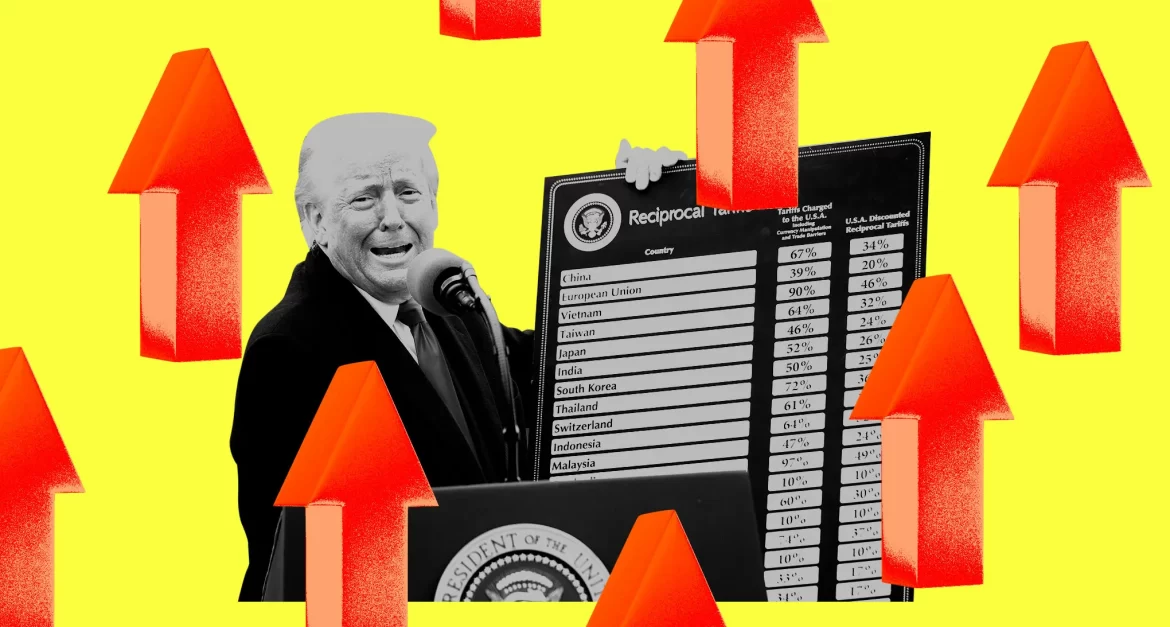
No time to read the whole post. How about listen time while driving and following the podcast in spotify?
Grab a coffee, Owner Operator friends—let’s talk about why your load board suddenly feels like a roller‑coaster.
1. A Quick Refresher: What Changed?
Over the past 12 months the USA fired off three big tariff salvos that matter to trucking:
| Date | What Happened | Why It Matters on the Road |
|---|---|---|
| May 2024 | Biden quadruples duties on China‑made electric vehicles to 100 % and raises levies on batteries, chips and solar gear | Importers rushed to beat the hike, stuffing West Coast warehouses with electronics and auto parts |
| Mar 4 2025 | CBP starts collecting new executive‑order tariffs on goods from China and—in a shock twist—Mexico & Canada | Cross‑border lanes lit up as shippers tried to sneak freight across the border before the deadline |
| Mar 12 2025 | President Trump revives a blanket 25 % tariff on all steel & aluminum imports | Flatbeds hauling steel, coils and I‑beams suddenly became hot property |
2. The “Tariff Whiplash” Every Spot‑Market Player Felt
- Pre‑deadline freight surge – Importers front‑loaded containers to dodge duties. From March 24–31 to April 1–8, U.S. imports crashed 64 % after the tariffs actually hit—a true “tariff shockwave” that left port truckers twiddling their thumbs [FreightWaves].
- Flatbed boom – Six straight weeks of rate hikes pushed March flatbed pricing to its strongest start since 2017 as steel and lumber shippers stockpiled inventory [Trucking Dive]
- Border‑run bonanza – Toronto‑to‑Chicago van demand jumped 57 % and Laredo volumes spiked 12 % right before the March deadline, sending cross‑border spot rates to two‑year highs [Reuters].
Then… the music stopped. Loads evaporated almost overnight in the very lanes that had paid premiums a week earlier—a classic feast‑to‑famine hit for Owner Operators living on the spot market


3. What the Numbers Say
The DAT Truckload Volume Index (TVI) shows exactly how jerky things got:
| Segment | Feb 2025 Avg Rate (incl. fuel) | Mar 2025 Avg Rate | Δ Vs. Jan | Story in a Line |
|---|---|---|---|---|
| Dry Van | $2.04 / mi | $1.99 / mi | ▼ | Too many vans chasing dwindling post‑tariff freight |
| Reefer | $2.36 / mi | $2.27 / mi | ▼ | Produce lull + import pause kept reefers idle |
| Flatbed | $2.45 / mi | $2.53 / mi | ▲ | Steel & lumber stockpiling sent rates climbing six weeks straight |
★ Even reefers felt some tariff ripple—China’s retaliatory pork tariffs cut export loads, offsetting produce season gains.
4. Winners, Losers … and Wildcards
| Who | How Tariffs Hit Them |
|---|---|
| Owner Operators | The brave souls who chased hot lanes (steel out of Houston, autos out of Laredo) pocketed record one‑way rates—but many got stranded on the backhaul once tariffs kicked in. Cash‑flow discipline is everything right now. |
| Brokers | First they hustled to cover panic freight, then spent April begging for trucks in soft markets—margin whiplash, anyone? |
| Shippers | Those who front‑loaded now sit on sky‑high inventories; others are paying the 25–100 % duty. Either way, they’re pushing for cheaper contract rates to offset cost pain. |
| Carriers still on contracts | They watched their spot competitors ride the spike, but avoided the slump. Sometimes boring wins. |
| Manufacturers | Some are fast‑tracking “friend‑shoring” to Mexico—but the same tariff sword could fall there next. |
5. Regional Ripples You Can Actually Feel
West Coast: After January’s container rush, LA/LB volumes collapsed with that 64 % drop. Dry‑van rates out of SoCal sagged in April—many trucks are now dead‑heading east instead.
Border States: Texas remained hot through March; but once tariffs started, southbound volumes dipped while northbound capacity flooded the market. Watch Laredo spot boards daily.
Midwest Steel Belt: Flatbeds hauling coils & beams suddenly have leverage. Some shippers are locking in short‑term contracts to secure capacity before summer construction.
Southeast Ports: Savannah & Charleston grabbed rerouted freight from Asia; van rates held steady even as the rest of the network cooled.
6. Capacity Is Quietly Tightening
More than 350 trucking authorities have vanished each week for two years straight, a historic bleed‑off that FreightWaves says signals the “Great Freight Recession is officially over” [FreightWaves]. Fewer trucks + tariff‑induced inefficiencies could flip pricing power to carriers by late 2025—even for vans and reefers.
The American Trucking Associations warns that tariffs hit the 85 % of USA–Mexico freight hauled by truck, straining 100 k drivers and pushing equipment prices up to $35 k per unit [FreightWaves]. Translation: when the next demand surge arrives, there may not be enough rigs left to cover it.
7. What Can You Do Tomorrow?
- Follow the inventory, not the headlines. Spot spikes happen where shippers still need to unload those stockpiles—think Midwest warehousing hubs as Q2 progresses.
- Negotiate round‑trip pricing. If a broker begs you to run Canada or Mexico right before a tariff date, bake the empty backhaul risk into your rate.
- Diversify equipment or partners. Flatbed extra‑busy? Lease a step‑deck. Van slow? Team up with a regional carrier on mini‑contracts.
- Watch load‑to‑truck ratios daily. DAT’s free Trendlines will tell you when a region flips from feast to famine.
- Cash is king. Tariff markets create record highs and painful lows within weeks. Keep a fuel cushion and avoid bidding wars you can’t win.
8. The Road Ahead
Economists at DAT say the spot–contract rate gap “has likely peaked” and expect a gradual tightening through summer—unless a deeper trade war chills overall freight demand [DAT]DAT. If tariffs stay but U.S. manufacturing rebounds (thanks to on‑shoring incentives), domestic miles could more than offset lost imports.
In short:
- China tariffs cut sailings, but boost near‑shoring.
- Trump‑era steel duties pump flatbed loads, yet risk construction slowdowns later.
- Brokers and shippers will keep shifting playbooks, but nimble Owner Operators who track market data in real time can still win big.
So tighten the ratchet straps, refresh that load board, and stay flexible. The tariff era is messy—but for those who read the signs, the next profitable lane is always one click away.
Happy hauling!